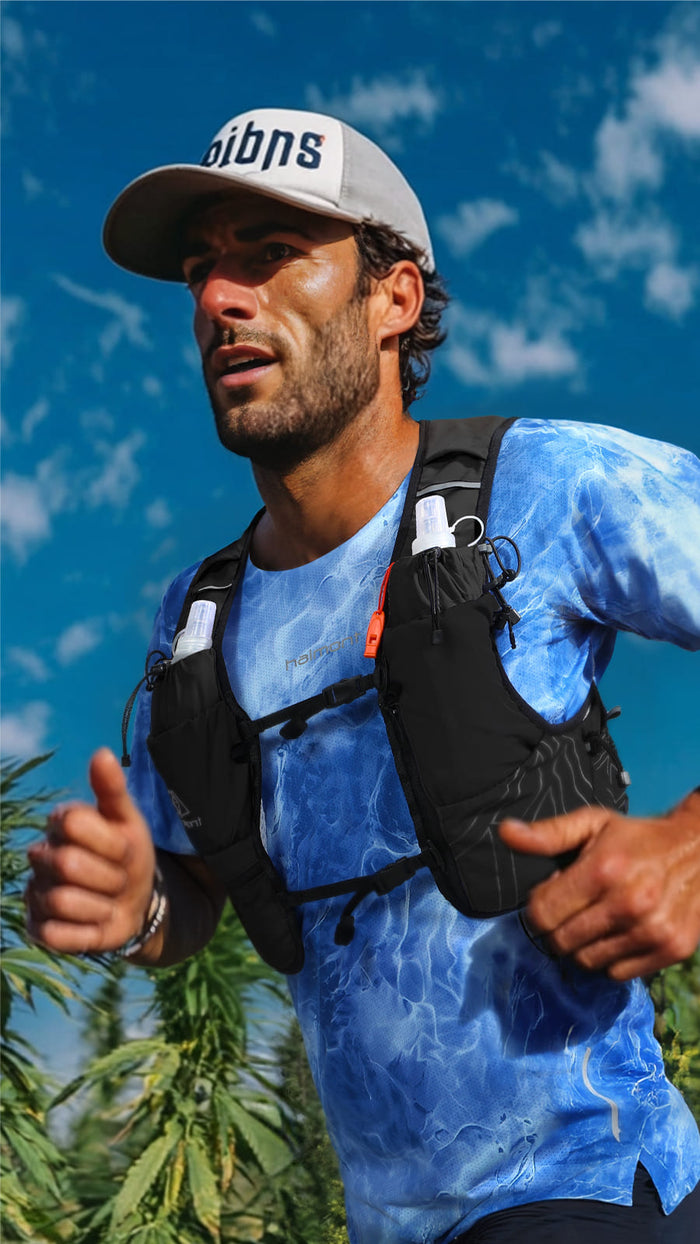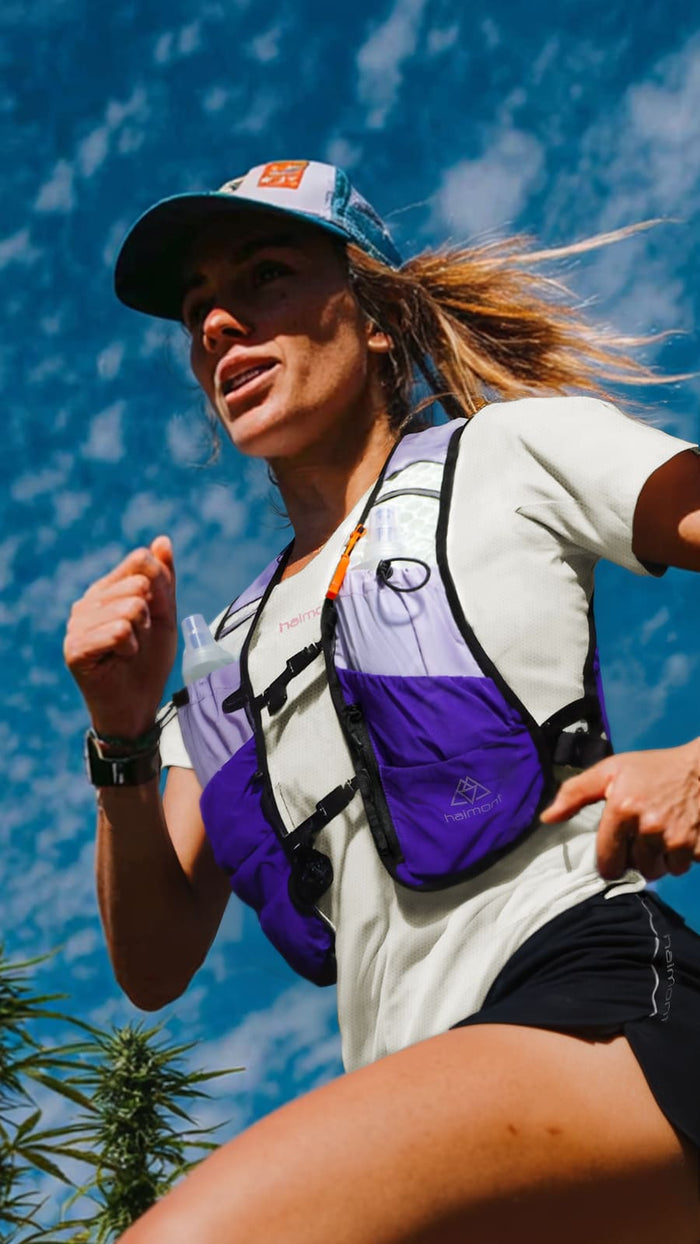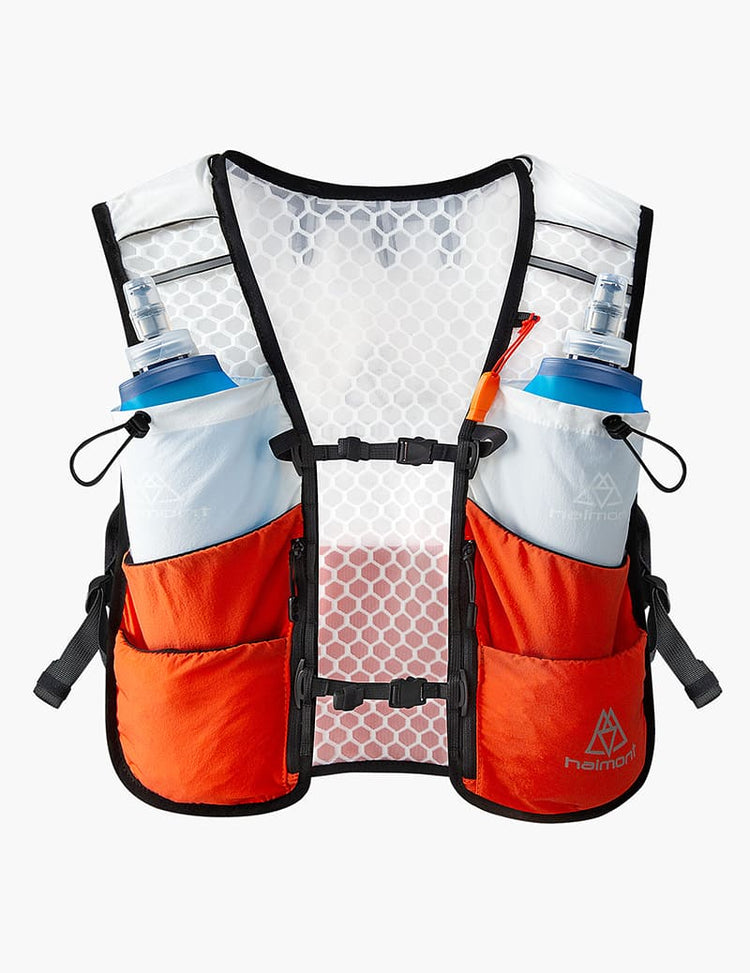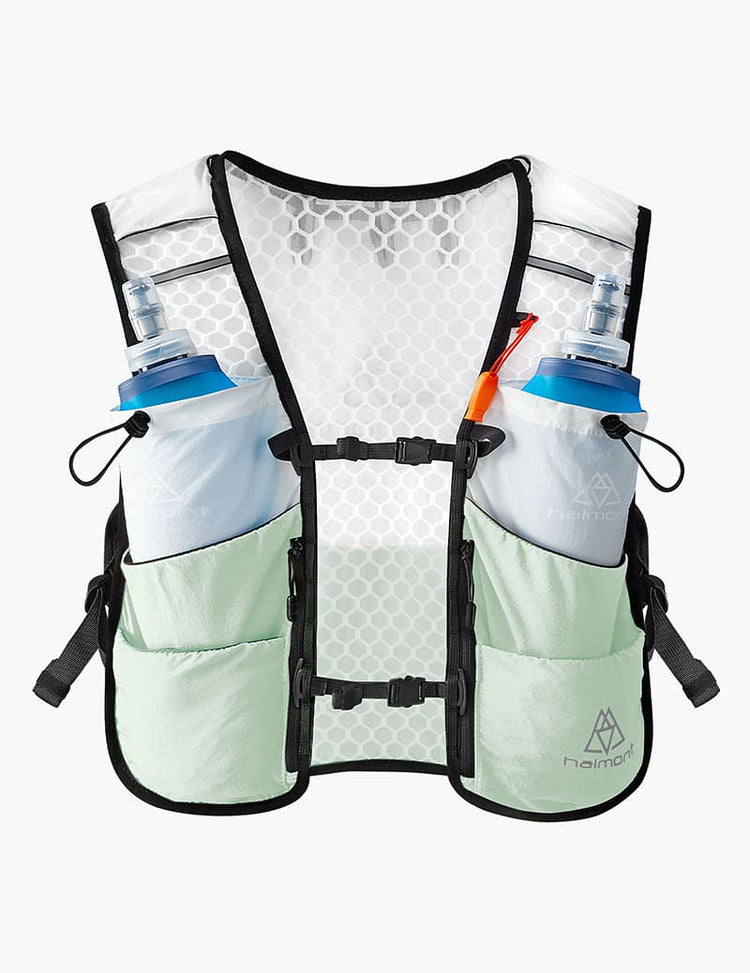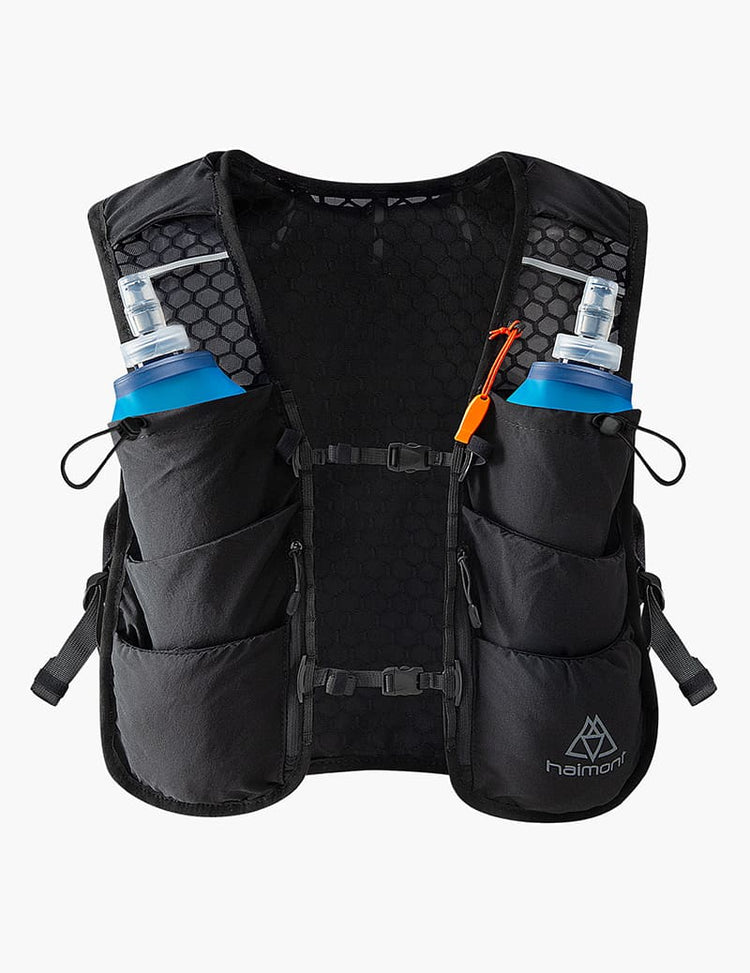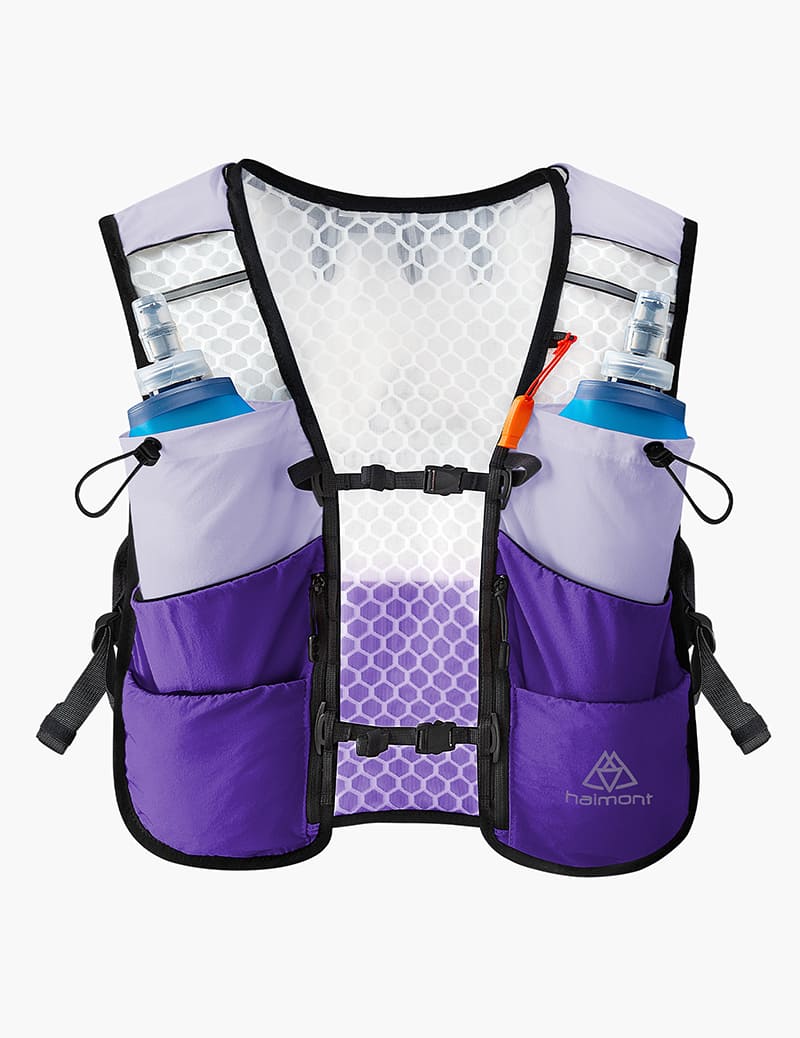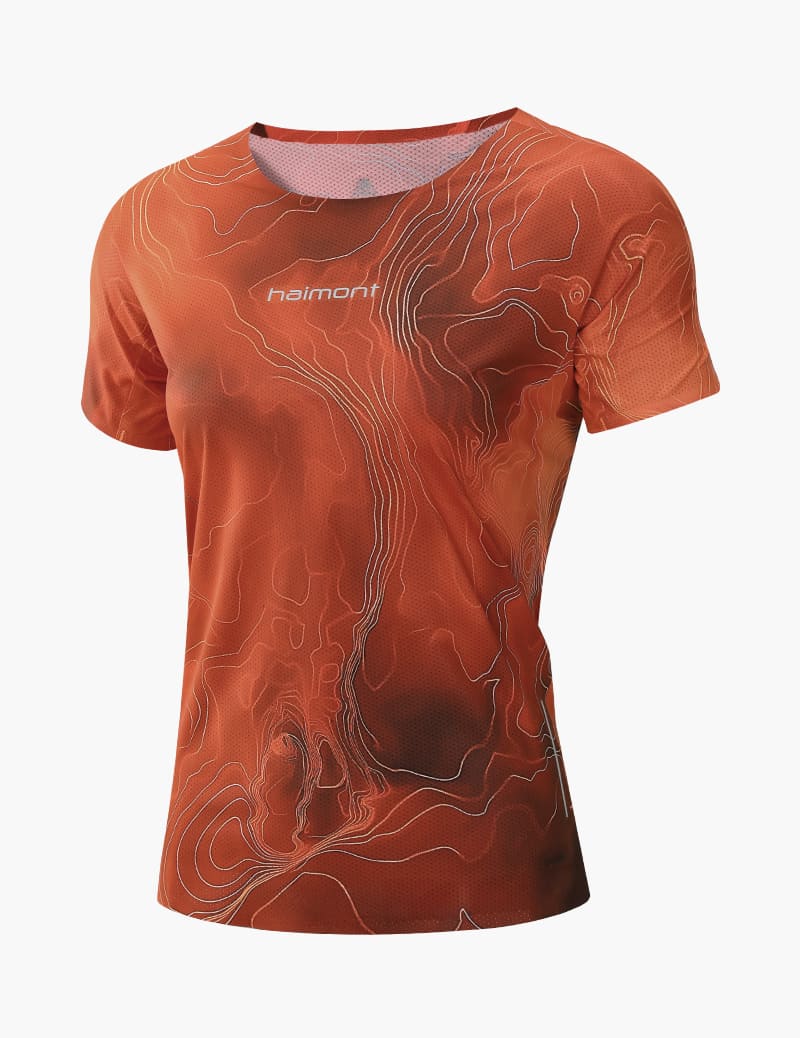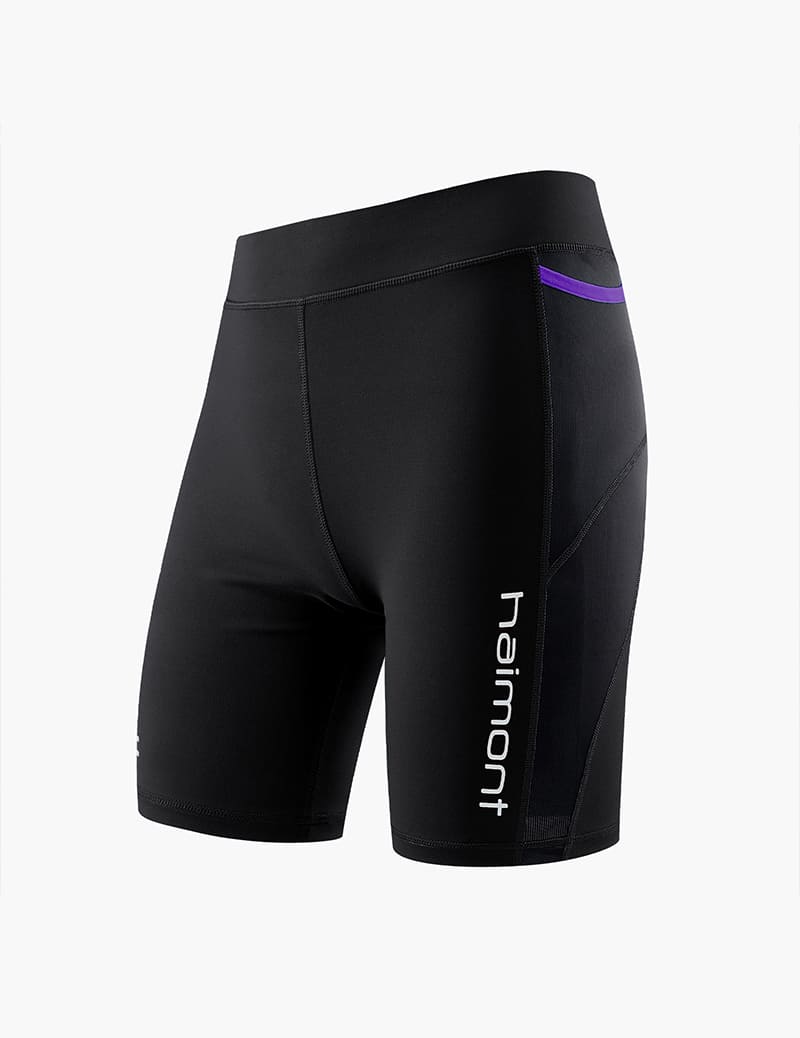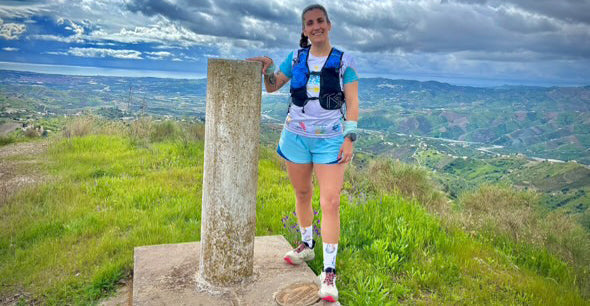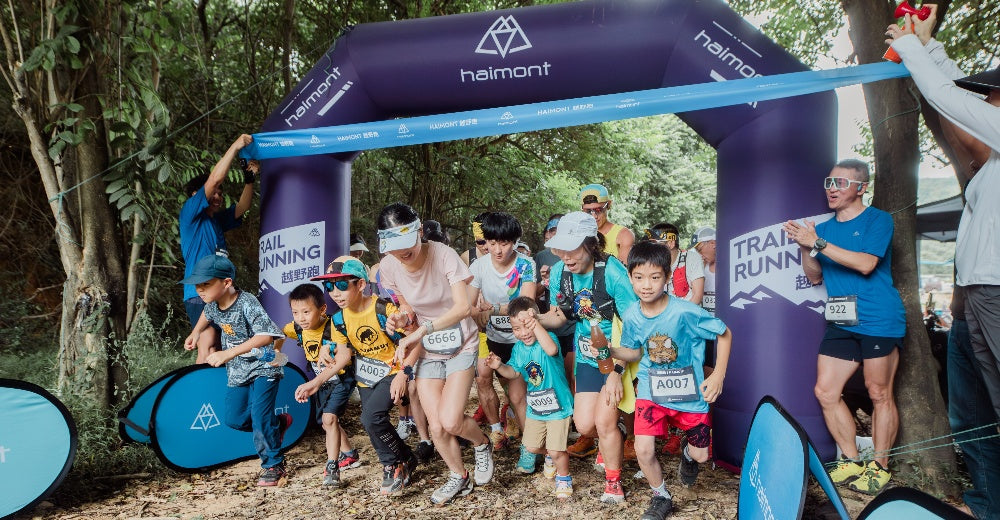Table of contents
As a sport that combines nature with challenges, trail running has attracted an increasing number of women to join. However, women often face some different physical and psychological challenges from men in trail running training and competition. By understanding these unique needs and limitations, combined with scientific training methods, reasonable nutritional supplements, and appropriate equipment selection, female runners can overcome bottlenecks, enhance their performance, and enjoy the fun and sense of accomplishment that trail running brings.
This guide will explore the common physical and psychological challenges of female trail runners in depth, provide specific solutions, and introduce special needs in equipment selection and training strategies to help female runners achieve breakthroughs in trail running more scientifically and effectively.

Physiological challenges and solutions
The impact of the menstrual cycle
The female menstrual cycle is divided into four phases (follicular phase, ovulation phase, luteal phase, and menstrual phase). The levels of estrogen and progesterone in the body will affect physical fitness, mood, and muscle state at different stages.
Problem manifestations:
- Menstrual period (days 1-5): pain, bloating, fatigue, and decreased performance.
- Follicular phase (days 6-14): Estrogen rises, endurance and strength increase, and it is the golden period for training.
- Ovulation period (days 14-16): Estrogen and progesterone rise at the same time, and you may feel energetic, but joint stability decreases and the risk of injury increases.
- Luteal phase (days 17-28): Progesterone dominates, body temperature rises, and you may feel tired and have mood swings.
Solutions:
- Record your menstrual cycle: Use mobile phone apps (such as Clue, Flo) or manually record your menstrual cycle to understand your physical condition at different stages.
- Adjust your training plan:
- Follicular phase (days 1-14): Suitable for high-intensity training, such as interval running, hill climbing training, etc.
- Ovulation period (days 14-16): Suitable for challenging speed and technical training.
- Luteal phase (days 17-28): Suitable for reducing training intensity and arranging relaxing jogging or yoga.
- During menstruation (days 1-5 of the cycle): If you feel uncomfortable, you can do low-intensity recovery training, such as hiking, easy jogging or stretching.
Equipment tips:
- Choose the right sports bra and bottoms: During menstruation, you can choose functional underwear that absorbs moisture and perspiration, or use menstrual pants to avoid embarrassing leakage.
- Prepare extra physiological products: Carry tampons, sanitary napkins or menstrual cups in your trail running vest pack to ensure that they can be changed in time even in the mountains.
Australian sports nutritionist and runner Lucy Bartholomew (the youngest finisher of a 250km event) shared:
"In the 2018 Marathon des Sables, I adjusted my salt replenishment strategy during the luteal phase, increasing sodium intake from 500mg/h to 700mg/h and switching to electrolyte powder containing ginger, which reduced my incidence of stomach discomfort in high temperatures by 65%."
Differences in muscle strength and endurance
Women usually have certain disadvantages in muscle strength and endurance in trail running, which is directly related to physiological structure and hormone levels. Due to lower testosterone levels in women, the volume and strength of their muscles are naturally weaker than those of men. In addition, women's bone structure (such as a wider pelvis and narrower knee spacing) may cause greater pressure on the lower limbs, thereby increasing the risk of injury. Despite these differences, through scientific training, women can significantly improve their strength and endurance, make up for their natural disadvantages, and even perform well in ultra-long-distance endurance competitions.
Strength training: Enhance muscle strength and fatigue resistance
In trail running, strong muscle strength helps improve running efficiency, reduce fatigue, and reduce the risk of injury. Strength training requires systematic strengthening of muscle groups commonly used in trail running (such as lower limbs, core, and upper limbs).
Training principles:
- Perform strength training 2-3 times a week.
- Each training session lasts about 45-60 minutes.
- Use medium-weight + high-repetition training to enhance muscle endurance and fatigue resistance.
- Use functional training to simulate dynamic movements in trail running (such as climbing, jumping, and downhill sprinting).
Lower limb strength training (12-15 times per set, 3-4 sets)
Strengthening lower limb strength can improve stability and explosive power in climbing and descending:
- Squats – focus on stimulating the quadriceps, gluteus maximus and hamstrings
- Can be done with a barbell, dumbbell or bare hands
- Keep the knees in line with the toes and keep the center of gravity in the middle of the sole
- Lunges – Strengthen the gluteal muscles, quadriceps and core balance
- The knee is perpendicular to the ankle when the front foot lands
- Enhance the ability to support one leg when climbing and descending
- Deadlift – Strengthens hamstrings, hips and lower back
- Keep back straight and core tight
- Excellent in improving climbing ability and stability on downhills
- Hamstring Curl – Strengthens hamstrings and calf muscles
- Can be done with elastic bands or fitness equipment
- Calf Raise – Improves calf strength and bounce
- Improve ankle stability on downhill or technical terrain
Core strength training (20-30 seconds per set, do 3-4 sets)
Strengthening core strength can improve balance and body coordination during running:
- Plank – Strengthen core stability
- Keep your body in a straight line and keep your back and hips level
- Side Plank – Strengthens side abdominal muscles and balance
- Lift your upper leg to increase the difficulty
- Russian Twist – Strengthens rotational core strength
- Hold your feet in the air and keep your abdomen tight while rotating left and right
- Mountain Climber – Enhance abdominal strength and cardiopulmonary capacity
- Raise your legs alternately and quickly to maintain a steady rhythm
Upper limb strength training (12-15 times per set, 3-4 sets)
Although trail running is mainly based on the lower limbs, upper limb strength helps to maintain body stability and arm swing rhythm during long-distance running:
- Push-ups – Strengthen chest muscles, triceps and shoulders
- Tricep Dips – Strengthen triceps
- Overhead Press – Strengthen shoulders and upper back muscles
- Pull-Ups – Strengthen back strength and enhance climbing ability

Endurance training: Enhance cardiopulmonary function and long-term output capacity
Endurance training is the core of trail running. By enhancing cardiopulmonary function, muscle endurance and energy metabolism efficiency, it helps women maintain a stronger rhythm and fatigue resistance in long-distance competitions.
Training principles
- Perform endurance training 3-5 times a week
- Combined with long-distance jogging and high-intensity interval training (HIIT)
- Gradually increase the total amount of training, and increase the total mileage by no more than 10% per week
- Focus on climbing training to improve climbing and descending ability
Long distance jogging (LSD)
- Training purpose: Enhance aerobic capacity and improve endurance
- Intensity: Keep heart rate at 60%-70% of maximum heart rate
- Time: 1-2 times a week, lasting 60-120 minutes
- Focus: Simulate competition terrain and enhance adaptability to the track
High-intensity interval training (HIIT)
- Training purpose: Improve maximum oxygen uptake and lactic acid tolerance
- Intensity: Heart rate reaches 80%-90% of maximum heart rate
- Time: 1-2 times a week, each set lasts 30 seconds-2 minutes, rest 30-60 seconds
-
Example:
- 400-meter sprint + 60 seconds jogging, repeated 6-8 times
- 30 seconds of hill sprint + 30 seconds of rest, repeated 8-10 times
Hill training
- Training purpose: Improve muscle strength and cardiopulmonary function
- Intensity: Heart rate reaches 70%-85% of the maximum heart rate
- Time: Once a week, choose 10-15 minutes of hill climbing or mountain running
- Key points: Keep the pace and heart rate stable
- Beginner runners: 4-6 sets×2 minutes, slope 8-10°, slow walking recovery between sets
- Intermediate runners: 6-8 sets×3 minutes, slope 12-15°, heart rate controlled at 85% of the maximum heart rate
- Elite runners: 10 sets×5 minutes, slope 15-20°, use the "2 minutes fast + 3 minutes continuous" speed change mode
American trail runner Courtney Dauwalter (three-time UTMB champion) shared:
"During the follicular phase, I will do key climbing training, such as completing 10 sets of 5 minutes of 15°climbing in the Colorado mountains, with a heart rate controlled at 160-170bpm. In the luteal phase, I switch to technical training, deliberately practicing 180 steps/minute fast-paced techniques on downhill sections with a slope of 8-10°."
Differences in nutritional needs
During exercise, women have higher requirements for nutrients such as iron, calcium, magnesium, and vitamin D than men. Iron deficiency may lead to anemia, and insufficient calcium and vitamin D increase the risk of fractures and fatigue injuries.
Solution:
- Balanced diet:
- Foods rich in iron: red meat, animal liver, dark green vegetables.
- Foods rich in calcium: dairy products, soy products, dark green vegetables.
- Foods rich in magnesium: nuts, whole grains, dark green leafy vegetables.
- In-race replenishment strategy
- Consume carbohydrates before the race to ensure adequate glycogen reserves.
- During the race, consume 30-60 grams of carbohydrates per hour (energy gel, sports drink, dried fruit, etc.).
- Supplement electrolytes (sodium, potassium, magnesium) to prevent cramps.
Equipment tips:
- Choose a women's trail running vest: Women's shoulder width and chest circumference are different from men's, so choose a backpack that fits the female body shape.
- Essential supplies in the backpack: Energy gel, nut bars, glucose tablets. Electrolyte supplement tablets or drinks.
Psychological challenges and coping strategies
Self-doubt and lack of confidence
Women may have self-doubt due to social stereotypes or lack of experience, and worry that they cannot complete high-intensity competitions.
Solutions:
- Set realistic goals: gradually increase the training distance and intensity in stages.
- Record progress: use a sports watch or APP to record running distance, pace, climbing and other data.
- Join a female running group: find like-minded female runners, encourage each other and boost confidence.
Concerns about safety
Women who train or compete alone in the mountains may worry about encountering wild animals, bad weather or harassment from strangers.
Solutions:
- Choose a safe route: choose a trail running track with a lot of people or participate in a formally organized trail running event
- Carry first aid equipment: lightweight windbreaker, waterproof blanket, energy bar, emergency whistle, personal positioning device.
- Carry self-defense tools: such as anti-wolf spray or a small folding knife
- Choose a route with a lot of people and avoid training at night.
Spanish runner Núria Picas (2014 UTWT overall champion)'s mental training:
"I developed a 'fear grading system' that grades technical sections from 1 to 10. I practiced box breathing (4-7-8 rhythm) for 5 minutes before each training session, which helped me safely pass the famous 'Bear Creek' dangerous downhill section in the 2014 Hard Rock 100 race."
Equipment solutions for different scenarios
Long-distance endurance races
- Core demand equipment: continuous friction protection
- Solution: compression pants (gradient pressure) + five-toe socks (intertoe isolation
Technical downhill
- Core demand: joint stability
- Core demand equipment: carbon fiber trekking poles (women's special grip angle) + Zensah ankle sleeves (dynamic compression)
Night training
- Solution: biorhythm maintenance
- Core demand equipment: headlamp with amber light source (inhibits melatonin decomposition)
High-altitude events
- Solution: hypoxia adaptation
- Core demand equipment: hypoxia mask
Competing during menstruation
- Solution: Leak-proof and comfortable
- Core equipment: sports underwear (water absorption up to 60ml) + menstrual cup (can be used continuously for 12 hours)

Unique advantages of female trail runners
1. Stronger endurance: Women have a higher fat metabolism rate in long-term endurance sports, which is conducive to maintaining stable performance in long-distance events.
Ann Trason, the top female trail runner in the United States, has defeated male athletes and broken records many times in her more than ten-year career, demonstrating the outstanding ability of women in ultra-endurance events. In addition, in the 46-kilometer ultra-long distance swimming competition, the top 20 female athletes performed 12% to 14% faster than male athletes of the same level.
2. Faster recovery ability: Estrogen helps muscle repair and reduces inflammatory response.
3. Stronger psychological toughness: Women show stronger willpower and patience in long-term endurance sports.
Courtney Dauwalter - Endurance training and flexible adjustment, creating an ultra-long distance legend
Courtney Dauwalter is known for her amazing endurance and tenacity, especially in ultra-long distance trail races, where she can even take the lead when competing with male athletes. Her training strategies include:
- Low-intensity long-distance training: She does a long-distance jog (40-50 kilometers) once a week, keeping her heart rate at 60-70% of her maximum heart rate.
- Climbing training: During her training, she will do climbing training on steep mountain roads, each lasting about 30-60 minutes, with a slope between 8%-12%, to train leg muscle strength and cardiopulmonary endurance.
- Flexible adjustment of training cycles: Courtney adjusts her training plan according to her physical feelings and recovery status. When she is physically tired, she will choose to rest or do light training to avoid overtraining.
- Strengthening mental toughness: She emphasizes "smile and enjoy the game" during the competition, and helps herself maintain a positive attitude when she is physically tired and in pain through meditation and positive self-suggestion.
Achievements:
- 2017 Moab 240 (384 km) champion, Courtney not only won the women's championship with a total score of 2 days, 9 hours and 59 minutes, but also was more than 10 hours faster than the second place (male), demonstrating the endurance advantage of women in ultra-long-distance events.
- 2019 UTMB (Ultra-Mont-Blanc) Women's Champion (42 hours and 30 minutes).
- In 2023, she became the first woman to win the UTMB, Hardrock 100 and Western States 100 three 100-mile events in the same year.
Female trail runners need to face their own physical and psychological challenges and take advantage of their own advantages. Through scientific training, reasonable equipment selection and effective psychological adjustment, women can completely break through their limits in trail running and enjoy the joy and freedom of sports. Whether they are novice or senior runners, as long as they persevere, women can completely break through themselves in the trail running arena and enjoy the freedom and sense of accomplishment brought by nature and running.


